Emerald Coast
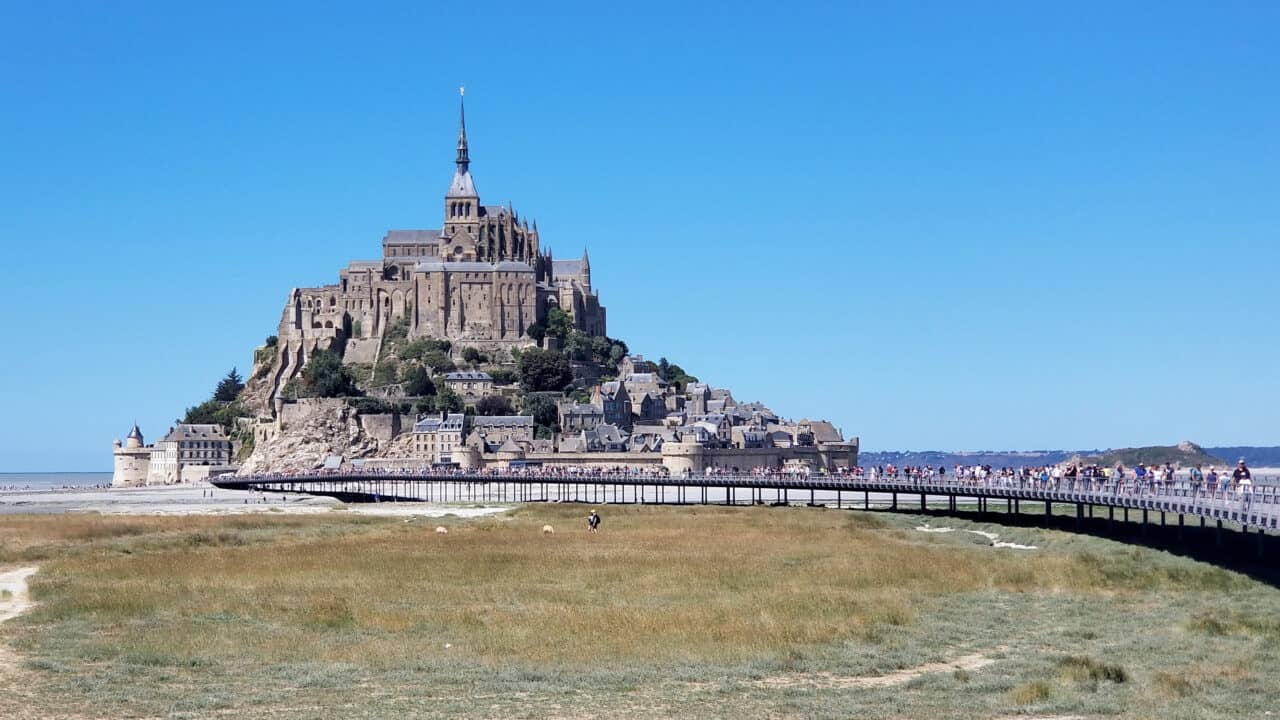
No we aren’t in Ireland, we have been visiting the Emerald Coast of France. Mont Saint-Michel is France’s most popular tourist attraction outside of Paris. I have decided that I am not very fond of French tourist attractions in August. This is the first year on our tour of Europe that the crowds have really bothered me in the height of the tourist season and the numbers are still not back to pre-pandemic. I will admit that Covid helped keep the crowds down in many cities that we visited during the previous two years and maybe we just got used to the very low numbers. It didn’t help my mood that we were nearing the end of our fourth major heatwave in two months. Temperatures reached 43°C (109°F) earlier. Not what I like at all!
Mont Saint-Michel is a medieval monastery perched on a giant rock in between the coast of Brittany and Normandy. Both regions have laid claim to the island, although Normandy currently asserts ownership.
We actually never got up into Mont Saint-Michel or saw its famous abbey. We cycled to the bottom of the island, looked around, thought about all the people, the uphill walking and the heat and decided to turn around. If we are ever back this way in low season we will stop by again. Mont Saint-Michel is a tidal island and we visited at low tide. This meant that it didn’t have the imposing look of the water coming right up to the walls that you see in many pictures but it was still extremely impressive.
The tides along the Emerald Coast are the highest in Europe. The tides at Mont Saint-Michel reach nearly 14 m or 46 ft. The Emerald Coast is so named because of the colour of the water. I must admit when I hear that term I think of the land of Ireland and not France.
Today Mont Saint-Michel only has a population of 25-30 people of which 5 are monks and 7 are nuns. 80% of all the restaurants, hotels and shops are owned by two people. The town mayor stopped all traffic from going over the causeway and had a large parking lot built on land he owned 3 miles from the town. From the parking lot visitors had to either walk three miles or take a shuttle bus onto the island. The lineups for the shuttle leaving the island were horrendous. Luckily Mike and I accidentally found a cycle path going to the island from the nearby town. We simply took our bikes out of the backseat of our car, unfolded them and cycled in. No line-ups and no parking fees.
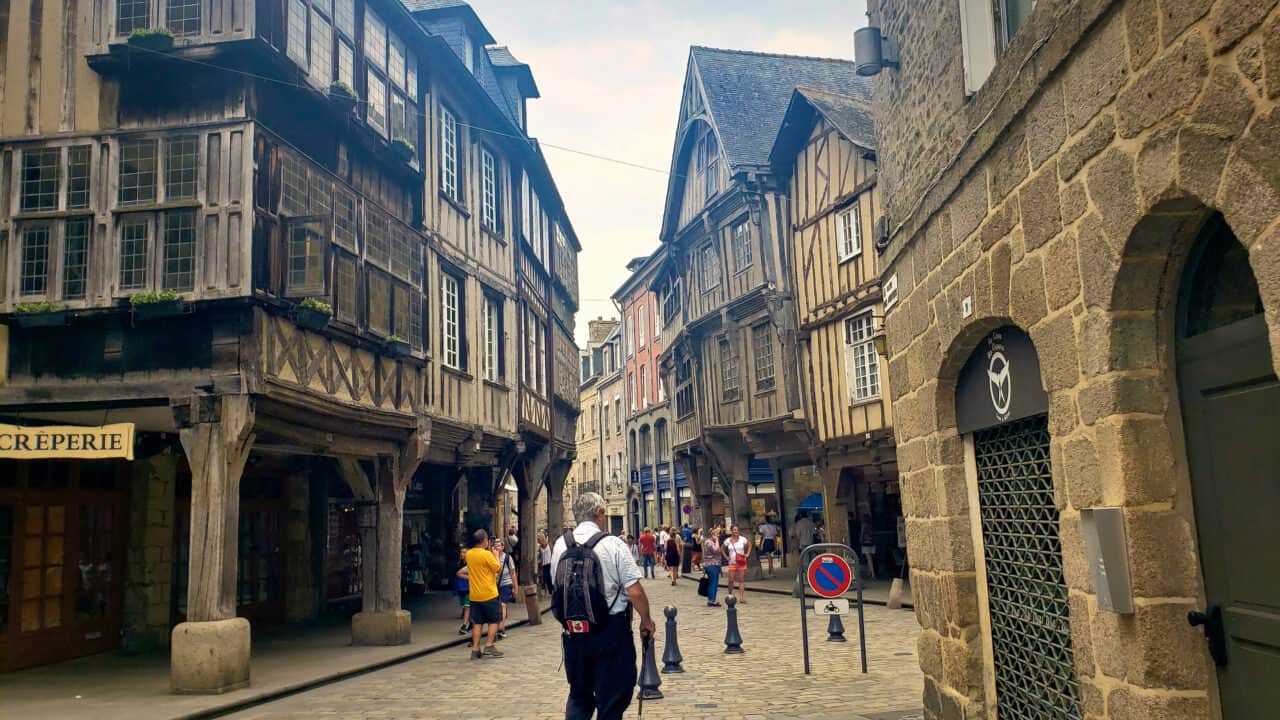
In addition to large cities and tourist attractions on the coast we also visit quite a few smaller towns and villages in the two weeks that we spent in Rennes. Many of them were lovely although, again sometimes with too many people. One of the restaurants we visited used actual LPs (long playing records for the younger generation) as place mats at the table. That was a little unusual.
Dinan was another lovely walled town where you could walk up on the ramparts. Mike and I walked along the walls but we didn’t climb up the higher clock tower even though it was supposed to have a spectacular view.
We did learn on this visit that if you see a French movie advertised at a theatre with the letters VO on the poster it means Original Version. This means that it could be in English with French subtitles. Mike and I could have been looking for this during the heatwave. I wish I had known this sooner.
Something else interesting is the attitude of people who originally think that we are Americans. As you can imagine this happens often, although I still always use my red Canadian backpack to keep these errors to a minimum. If someone has referred to us as Americans and we correct them and say that we are Canadians they instantly apologize for the terrible error and look like they know that they did something really wrong. It is definitely true that Canadians are better accepted almost everywhere which certainly works in our favour. That said, the French have named quite a few streets after American Generals and Presidents.
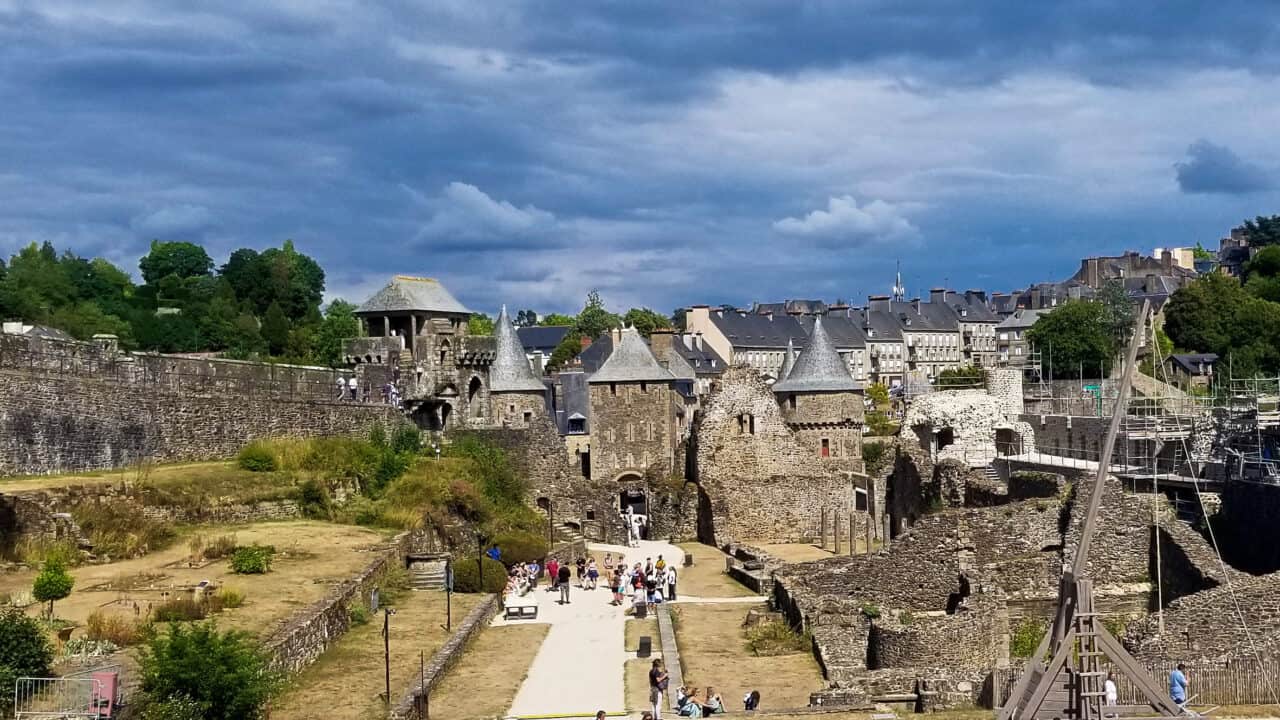
The entrance fee to the Castle of Fougères included an English audio guide. The tourwas supposed to take about 90 minutes while listening to the audio. I will say that both Mike and I thought there was a little too much of a history lesson to particularly enjoy this guide. For yet another day we walked up and down ramparts and up and down the towers and my thighs and my knees have said that’s enough.
Mike was quite intrigued with these four water channels each feeding a separate water wheel.
We continued our bike riding in this area, connecting the Loire Valley and Nantes to the English Channel at Mont Saint-Michel. One day, a large digital thermometer on the road told us that it was 37°C (99°F). I really didn’t need to know that while that we were cycling.
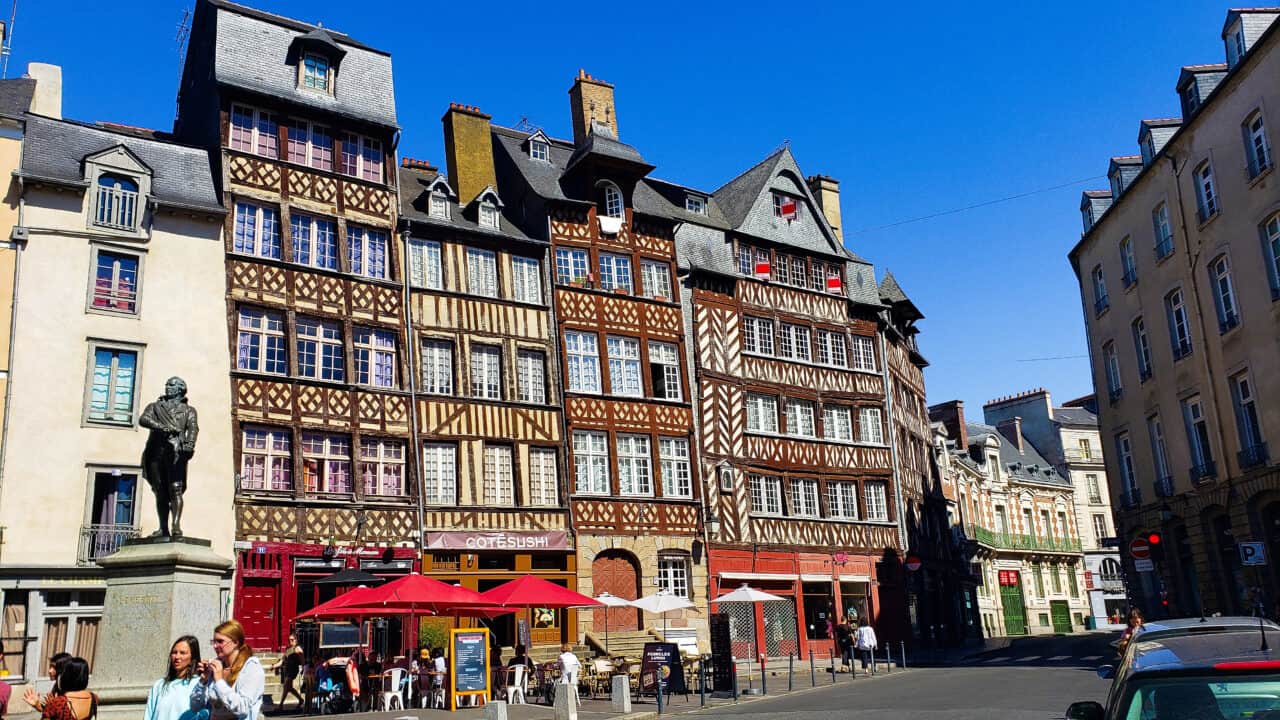
On our first night in Rennes we invited our British neighbours into our camper for a consolation drink. They had biked into town for the day and had had both of their bicycles stolen. The police said that they have about 20 bicycles stolen a week during the season. The only good news is that this happened near the end of their trip and not at the beginning. Mike and I would certainly move faster across Europe if we didn’t have our bikes to enjoy as we tour the countryside. It would definitely change our touring, and not for the better. Mike and I can’t replace our bikes in the EU, even though they are a German design. Europe doesn’t like some of the features that we really want on our bikes. We know first hand that trying to order bikes and have them shipped from North America is a major problem, largely because of the batteries which are designated “hazardous goods” and therefore can’t go on planes and many cargo ships won’t take them either.
Two days later Mike and I biked into Rennes and then wandered around listening to our audio guide of the city. It made for a most uncomfortable visit as we kept wondering if our bikes were still were we had left them locked up. We arrived in town before the lunch hour ended which was unusual for us. We were surprised that so many of the restaurants and cafés were closed and there weren’t a lot of tourists either. Even most of the churches were closed. It turned out that most of the museums and tourist spots didn’t open until after 2pm and we were early. I had thought that since it was a Sunday and a weekend that everything would be hopping. As we were leaving we came upon a much more lively area. We never found out if that was due to the time of the day or the location.
Rennes is the capital of Brittany or Bretagne as they say in France. You see tributes and memorials everywhere to Anne the Duchess of Brittany. In 1491 Anne inherited the duchy at the age of 14. To save Rennes, which was under siege, Anne agreed to marry the French king, France Charles VIII and thus the duchy of Brittany became part of France.
In the past when there was a heatwave, we would wait until much later in the day to go into town and walk around. This year the temperature just keeps getting hotter and hotter all afternoon until it finally peaks around supper time.
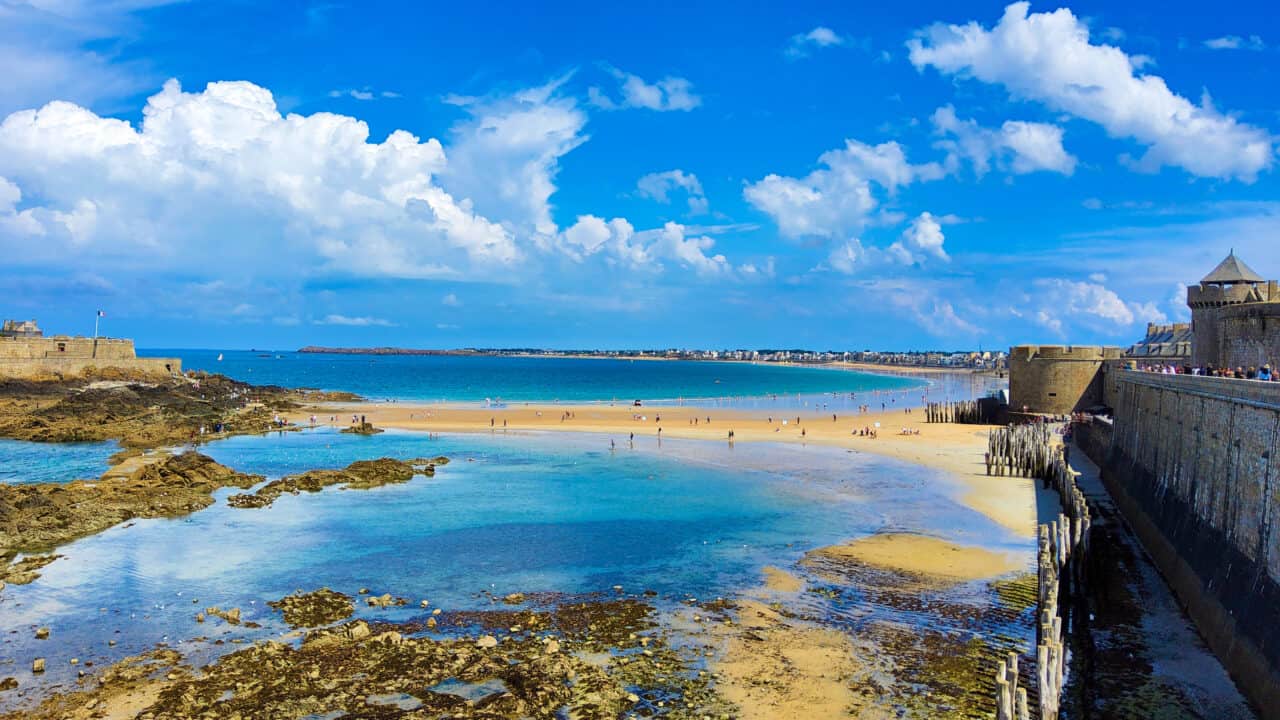
Another highlight of the Emerald Coast was Saint Malo which is a well-known historic tourist town built between the 17th and 18th centuries. I am absolutely in love with the stained glass windows in the churches throughout Europe. Some are now just really pretty artistic windows. Others tell biblical stories to an audience that was largely illiterate in medieval times.
You see ties in Saint Malo to Quebec which is interesting for us. There is a Québec House (Maison du Québec), a Place du Québec, the flags you can see below and more. The statue in the picture is of Robert Surcouf (1773-1827). I assumed that being placed on the Place du Québec meant that he had ties to Canada but I didn’t find any of significance when I looked into him. I did find an interesting quote attributed to him. When a British officer challenged the nobility of Surcouf with these words: “You, French, you fight for money. While we English fight for honour!” Surcouf replied: “ Everyone fights for what they lack.”
Jacques Cartier is one of the major ties between Saint Malo and Canada. Jacques Cartier was born and died in Saint Malo. He was the first European known to have explored and mapped inland portions of North America, specifically along the Gulf of St. Lawrence. Saint Milo credits Jacques Cartier with the discovery of North America and not Christopher Columbus who never even made it to the shores of mainland North America, never mind exploring inland. As a Canadian, Jacques Cartier was one of the major explorers that we were taught about in school.
Saint Malo was badly bombed during WW II and Quebec contributed a lot financially to the reconstruction. Interestingly, when they rebuilt they kept everything as close to the originals as possible with one exception. They made the streets wider to allow for some cars. We were told that every year French Canadians are invited over to Saint Malo to work as street performers during the high season.
Again, I am writing this as we are driving towards a new campground near the coast of Normandy. It is supposed to be a small campground with room for 14 campers. I am looking forward to that.
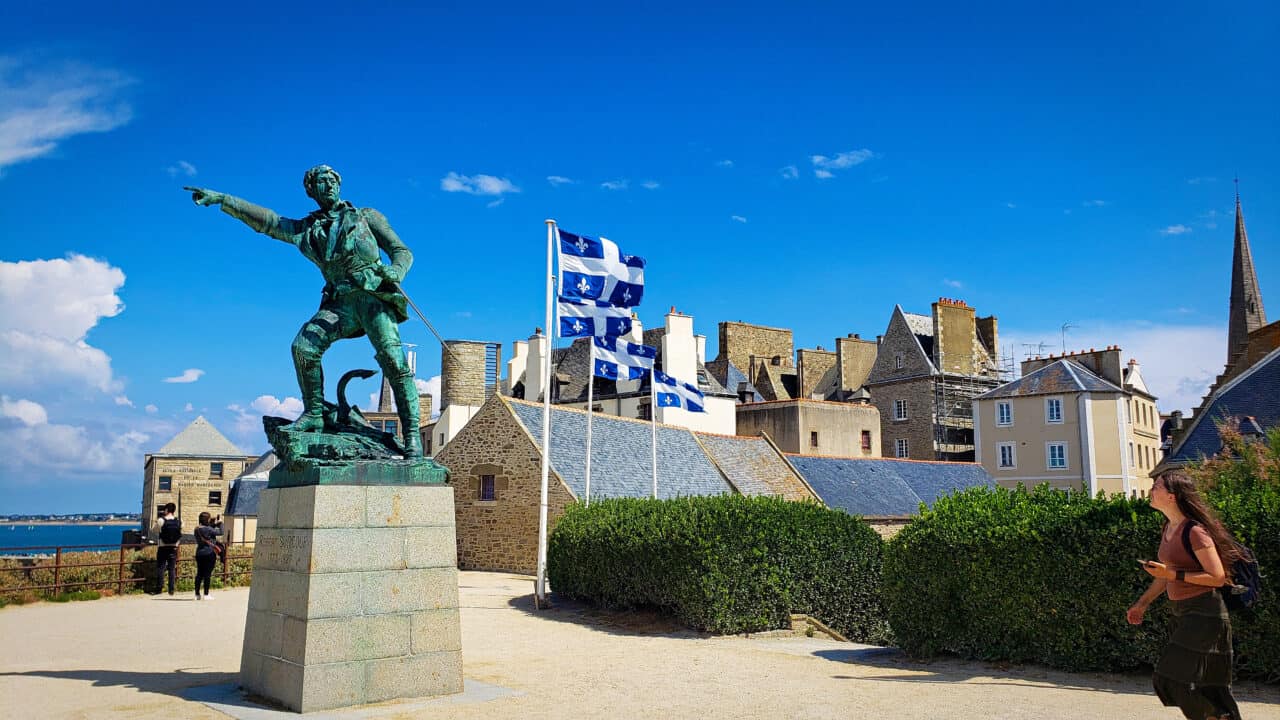
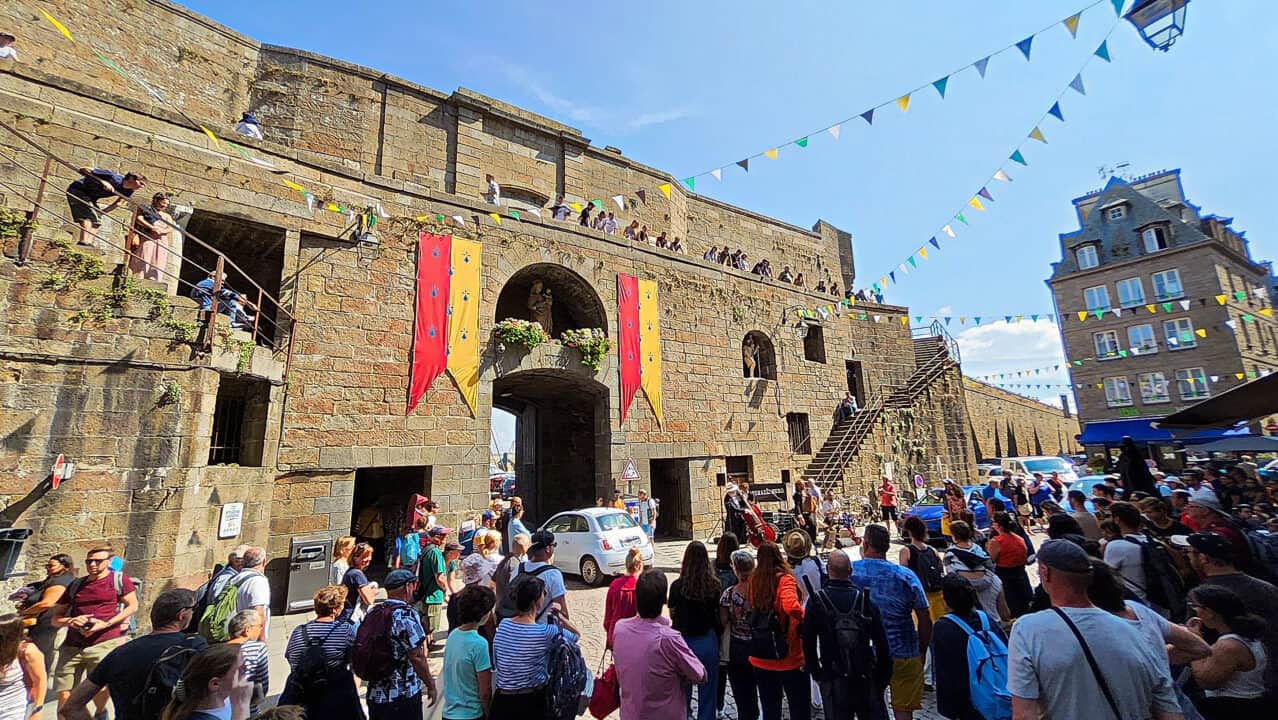
Addendum: We arrived at the campground and someone can’t count. There are probably spaces for 50 or more campers. There aren’t too many campers here at the moment which is nice for us.

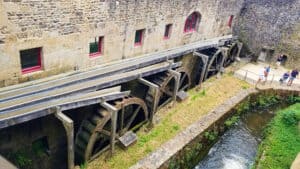
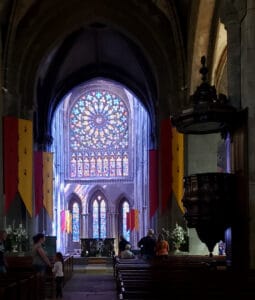
Leave a Reply